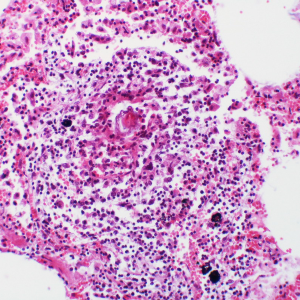Identifying the risk factors of schistosomiasis in Indonesia

Accepted: 10 October 2023
HTML: 10
All claims expressed in this article are solely those of the authors and do not necessarily represent those of their affiliated organizations, or those of the publisher, the editors and the reviewers. Any product that may be evaluated in this article or claim that may be made by its manufacturer is not guaranteed or endorsed by the publisher.
Authors
In Poso, Central Sulawesi, schistosomiasis prevalence has shown fluctuations, particularly in the Napu Highland, home to around 17,000 people, where there is a 0.15% risk of Schistosomiasis. This study aimed to analyze the risk factors associated with schistosomiasis in the Napu Highland. Conducted from April to June 2022, this case-control study included residents of schistosomiasis-affected villages. The sample consisted of 148 individuals (37 cases and 111 controls). Cases were residents aged over 2 years who had tested positive for schistosomiasis in a 2021 fecal survey conducted by the Poso District Health Office. Controls were selected as the nearest neighbors of the cases. Data on education, knowledge, occupation, sanitation practices, water sources, activities near water bodies, use of protective equipment, and livestock raising were collected through questionnaires. Statistical analysis involved the Chi-square test with α=5%. The results indicated that education (p=0.018; OR=3.147) and knowledge (p=0.056; OR=2.233) were associated with schistosomiasis. Individuals with lower education levels were 3.147 times more likely to contract the disease, while those with limited knowledge were 2.233 times more at risk. In conclusion, improving schistosomiasis prevention in the Napu Highland should involve enhancing knowledge, attitudes, and practices through health promotion initiatives that engage educators and community leaders.
How to Cite

This work is licensed under a Creative Commons Attribution-NonCommercial 4.0 International License.
Similar Articles
- Ahmad Juma, Arthur K.S. Ng'etich, Violet Naanyu, Ann Mwangi, Ruth C. Kirinyet, Factors associated with Schistosomiasis control measures in Mwaluphamba Location, Kwale County, Kenya , Healthcare in Low-resource Settings: Vol. 5 No. 1 (2017)
You may also start an advanced similarity search for this article.

 https://doi.org/10.4081/hls.2023.11760
https://doi.org/10.4081/hls.2023.11760



